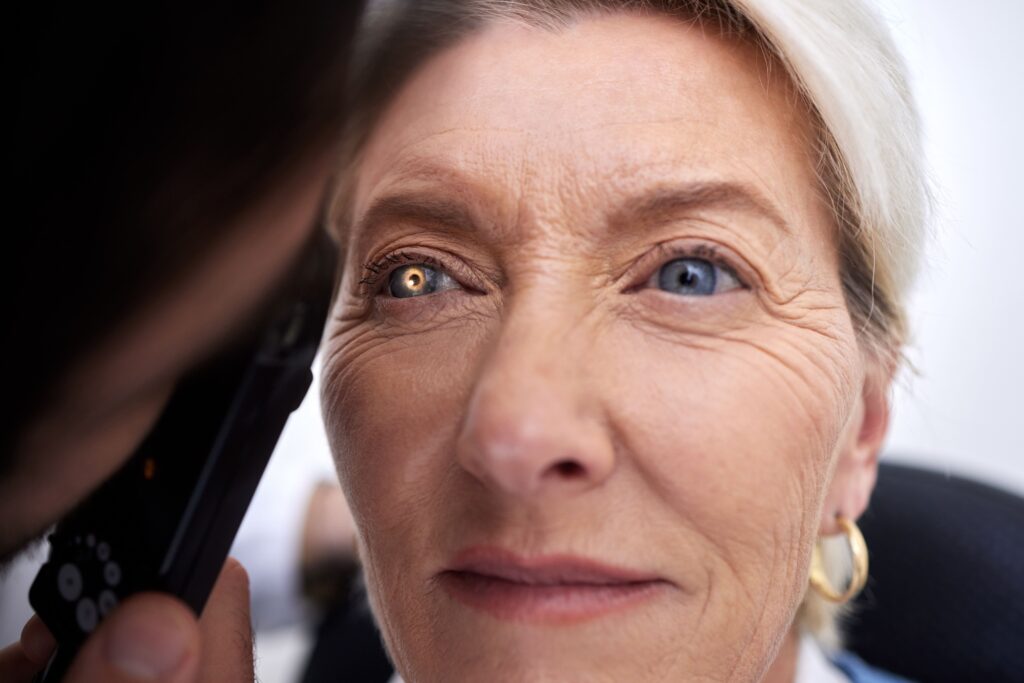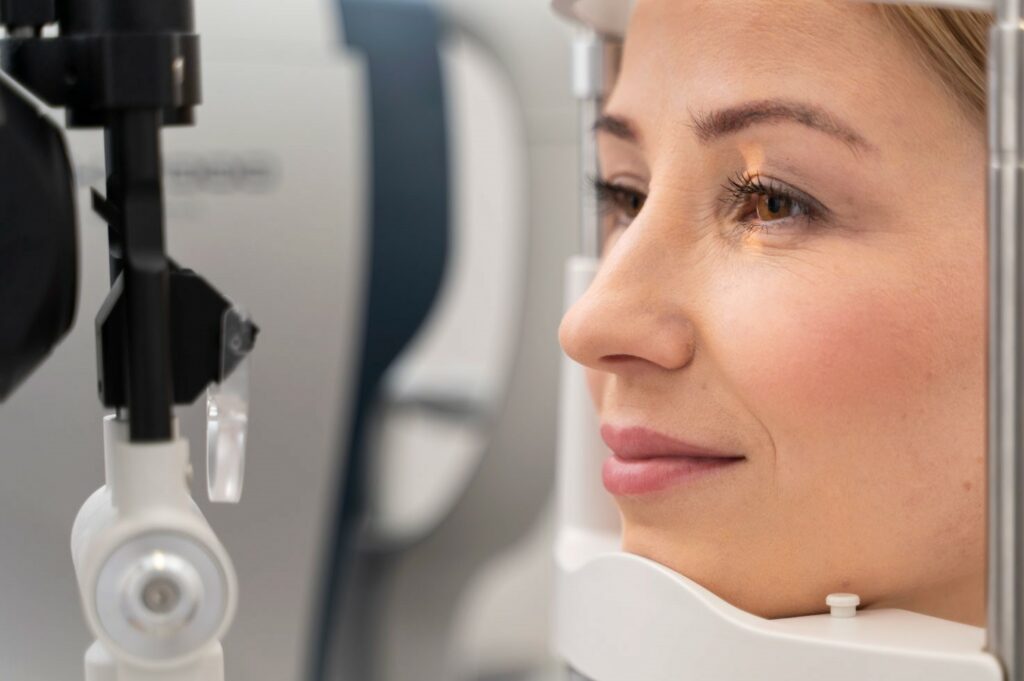Reviewed By: Julie A. Carter, M.D.
Glaucoma is a spectrum of eye diseases that cause permanent damage to the optic nerve through increased pressure inside the eye. Accounting for the vision loss of over 6.7 million people worldwide, it is the leading cause of blindness—irreversible without glaucoma surgery.
But you can stop the invasive disease before it develops by understanding the different variations of glaucoma, recognizing its symptoms, and pursuing treatment options. That’s why performing early detection and management with a glaucoma eye specialist is always essential.

Types
- Primary Open-Angle Glaucoma: The most prevalent form of glaucoma, it occurs gradually over time and progressively weakens the drainage canals in the eye, often necessitating open-angle glaucoma surgery to improve fluid drainage and reduce intraocular pressure. The result is increased eye pressure and permanent damage to the optic nerve.
- Angle-Closure Glaucoma: This is where the drainage angle in the eye becomes wholly or partially blocked, causing a sudden onset of increased eye pressure. The spontaneous spike in eye pressure causes rapid vision loss, so it’s important to seek medical attention immediately.
- Normal-Tension Glaucoma: Otherwise known as low-tension or normal-pressure glaucoma, it occurs when the optic nerve deteriorates despite normal eye pressure. It is unknown exactly why it forms, but some signs point to reduced blood flow to the optic nerve.
- Secondary Glaucoma: The direct cause of this variation is caused by injuries such as eye trauma, inflammation, or certain medications. Treating the underlying problem is vital to managing secondary glaucoma.
Symptoms
It may not be possible to notice glaucoma in its early stages of development. However, scheduling regular eye exams with an eye doctor or glaucoma eye specialist is the best way to perform early detection. As glaucoma worsens and makes its presence known, patients may experience the following:
- Consistent loss of peripheral vision, with no signs appearing until significant damage has occurred.
- Tunnel vision, where the direct line of sight narrows, and central vision remains intact.
- Blurred or haloed vision.
- Acute or chronic eye pain, headache, or eye redness (commonly felt with angle-closure glaucoma).
- Hypersensitiveness to light.
- Inability to see clearly in dimmed settings.
Treatment
Early diagnosis and proper treatment, including options like open-angle glaucoma surgery, are the most critical steps to slowing or halting glaucoma’s progression. Despite the condition being permanent, there are several treatment plans available depending on the severity of the case:
- Eye Drops: Though the most commonly prescribed medication, it is the least invasive. They are administered to lower intraocular pressure by reducing fluid production or fostering fluid drainage in the eye.
- Oral Medications: Beta-blockers, miotics, or Carbonic Anhydrase Inhibitors are all oral medications that can be taken with eye drops or as a substitution.
- Laser Therapy: Among the types of laser eye surgery for glaucoma, procedures like laser trabeculoplasty and iridotomy can effectively improve fluid drainage and reduce eye pressure.
- Microsurgery: When glaucoma advances to severe cases, traditional glaucoma surgery may be recommended. An example is the trabeculectomy, which creates a new drainage channel for the eye fluid to lower intraocular pressure.
- Minimally Invasive Glaucoma Surgery (MIGS): MIGS is a modern and less invasive procedure than traditional glaucoma surgery, leveraging a tiny device to drain the fluid in the eye.
- Monitoring and Regular Eye Exams: No matter the severity of your glaucoma, participating in ongoing monitoring and regular eye exams is the only way to provide tailored treatment and appropriately detect any changes in the condition.
Discover the latest advancements in glaucoma management and gain valuable insights into bringing your clear vision to life. Book an appointment with the Center for Sight for more information on our proactive glaucoma eye care.
**Please note that the suggestions provided in this blog are for general informational purposes only and may not be suitable for your specific insurance plan and glaucoma needs. It is important to consult a qualified healthcare professional for personalized advice and treatment.**



